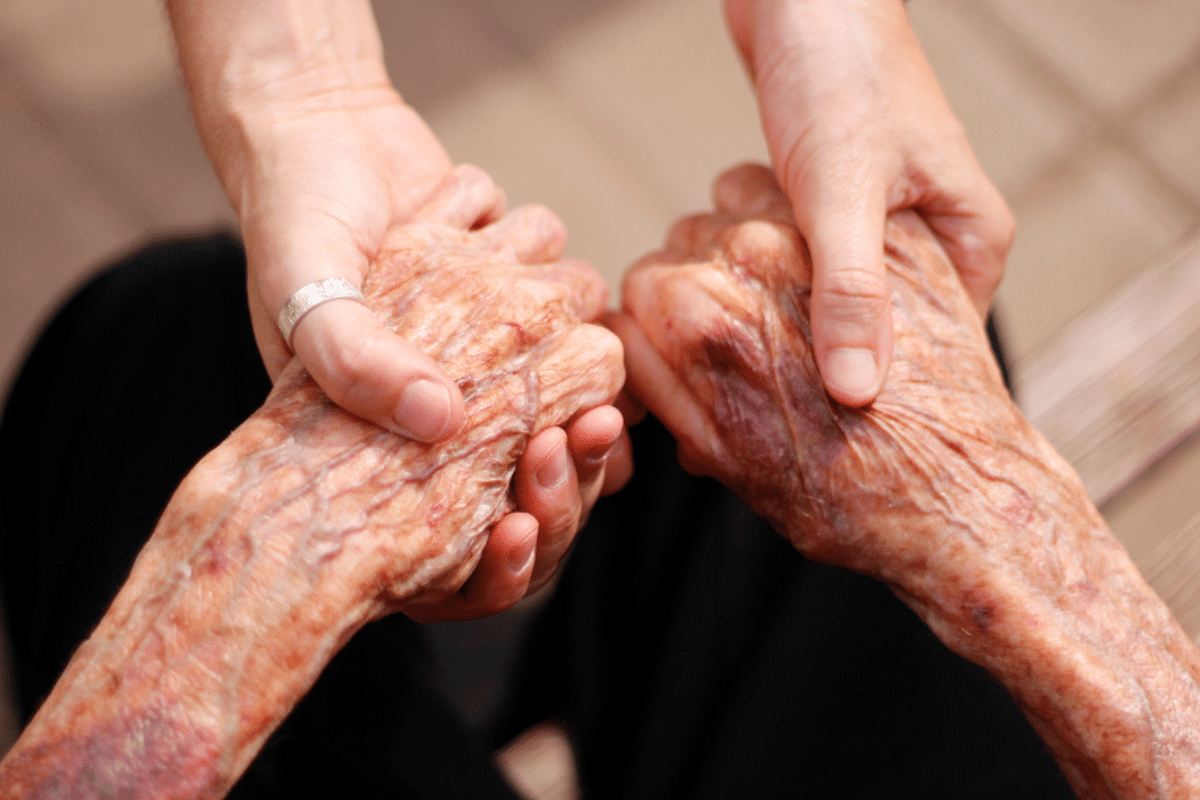Most older adults want to remain in their homes and communities as they age rather…
The Paycheck Protection Program: FAQs
The Paycheck Protection Program
Frequently Asked Questions
By: Vincent J. Russo
Russo Law Group, PC
Dated: April 6, 2020 (update)
There are so many small businesses desperately seeking information on how they can get assistance from the Federal Government.
Please be aware that the federal government is still in the process of implementing the program and the information below is our understanding of the Paycheck Protection Program.
There are several areas where there is a lack of clarity which are noted in this FAQ.
Please make sure that you speak to your professional advisors prior to filing for the Paycheck Protection Program (PPP) Loans.
Facebook Live Event on Thursday, April 8th at 2 pm
How Can the Paycheck Protection Plan Help Me?
Presented by Vincent J. Russo
Register in advance for this meeting on Zoom, click here.
After registering, you will receive a confirmation email containing information about joining the meeting.
Or you can join through Facebook Live.
What loan options are available to my business under the CARES Act?
There are two major loan programs included in the CARES Act for employers with less than 500 employees.
One is the Paycheck Protection Program (PPP), which allows for loans up to $10 million that can be forgiven tax-free if employers meet certain employee retention requirements. This program has been funded with $349 Billion Dollars.
The CARES Act also infused an additional $10 billion into the Small Business Administration’s Economic Injury Disaster Loan (EIDL) program, which will allow for faster delivery of the low-interest, long-term emergency loans always available through the SBA during a crisis. These loans are capped at $2 million each.
What is the Paycheck Protection Program (PPP) about?
The PPP Loan provides cash-flow assistance through 100 percent federally guaranteed loans to employers who maintain their payroll during this emergency.
If employers maintain their payroll, the loans would be forgiven, which would help workers remain employed, as well as help affected small businesses and our economy snap-back quicker after the crisis.
PPP has a host of attractive features, such as forgiveness of up to 8 weeks of payroll based on employee retention and salary levels, no SBA fees, and six months of deferral. All loan terms will be the same for everyone.
The small business had to be in operation on February 15, 2020 and have employees for whom it paid salaries and payroll taxes.
The Loans are available through June 30, 2020.
Who is eligible for the PPP Loan?
You are eligible for a loan if you are a business that employs 500 employees or fewer, or if your business is in an industry that has an employee-based size standard through SBA is higher than 500 employees.
Businesses include 501(c)(3) non-profits, 501(c)19 veteran’s organizations, Tribal business concerns, sole proprietorships, self-employed individuals, and independent contractors.
If I am a sole Proprietor, Independent Contractor or Self-Employed, am I eligible for the PPP?
Yes. Sole proprietors, independent contractors, and self-employed individuals are all eligible for the Paycheck Protection Program.
When can I apply?
- Starting April 3, 2020, small businesses and sole proprietorships can apply for and receive loans to cover their payroll and other certain expenses through existing SBA lenders.
- Starting April 10, 2020, independent contractors and self-employed individuals can apply for and receive loans to cover their payroll and other certain expenses through existing SBA lenders.
- Other regulated lenders will be available to make these loans as soon as they are approved and enrolled in the program.
Where can I apply for the Paycheck Protection Program?
You can apply for the Paycheck Protection Program (PPP) at any lending institution that is approved to participate in the program through the existing U.S. Small Business Administration (SBA) 7(a) lending program or through any federally insured depository institution, federally insured credit union, and Farm Credit System institution that is participating.
Other regulated lenders will be available to make these loans once they are approved and enrolled in the programs. by the Department of Treasury.
This could be the bank you already use, or a nearby bank. There are thousands of banks that already participate in the SBA’s lending programs, including numerous community banks.
You do not have to visit any government institution to apply for the program.
What do I need to apply?
You will need to complete the Paycheck Protection Program loan application which can be found at www.SBA.gov and submit the application with the required documentation to an approved lender that is available to process your application by June 30, 2020.
How do I begin the PPP loan application process?
You can apply at any FDIC bank or credit union, but contacting your current banker or lender first is recommended.
You will need to provide your lender with payroll documentation, such as your payroll processor records, payroll tax filings, or Form 1099- MISC, or income and expenses from a sole proprietorship. For borrowers that do not have any such documentation, the borrower will need to provide other supporting documentation, such as bank records, sufficient to demonstrate the qualifying payroll amount.
When is the application deadline for the Paycheck Protection Program?
Applicants must apply for the PPP loan by June 30, 2020. Although the program is open until June 30, 2020, you are encouraged to apply as quickly as you can because there is a funding cap and lenders need time to process your loan. You can only take one loan under this program.
What do I need to certify on the loan application?
As part of your application, you need to certify in good faith that:
- Current economic uncertainty makes the loan necessary to support your ongoing operations.
- The funds will be used to retain workers and maintain payroll or to make mortgage, lease, and utility payments.
- You have not and will not receive another loan under this program.
- You will provide to the lender documentation that verifies the number of full-time equivalent employees on payroll and the dollar amounts of payroll costs, covered mortgage interest payments, covered rent payments, and covered utilities for the eight weeks after getting this loan.
- Loan forgiveness will be provided for the sum of documented payroll costs, covered mortgage interest payments, covered rent payments, and covered utilities. Due to likely high subscription, it is anticipated that not more than 25% of the forgiven amount may be for non-payroll costs.
- All the information you provided in your application and in all supporting documents and forms is true and accurate. Knowingly making a false statement to get a loan under this program is punishable by law.
- You acknowledge that the lender will calculate the eligible loan amount using the tax documents you submitted. You affirm that the tax documents are identical to those you submitted to the IRS. And you also understand, acknowledge, and agree that the lender can share the tax information with the SBA’s authorized representatives, including authorized representatives of the SBA Office of Inspector General, for the purpose of compliance with SBA Loan Program Requirements and all SBA reviews.
What is the maximum amount I can borrow?
The amount any small business is eligible to borrow is 2.5 times an employer’s average monthly payroll costs (subject to a $10 million cap).
Payroll costs are the sum of any compensation with respect to employees, including salary, wages, commission, cash tips, vacation payments, leave payments, healthcare benefits, retirement benefits, and state and local taxes on employee compensation.
It is not clear what is the period for determining payroll costs. Whether it should be calendar year 2019, April 1, 2019 through March 31, 2020, or some other annual period prior to June 30, 2020.
You should be prepared to provide the lender with documentation for calendar year 2019 and for the period January 1, 2020 to March 31, 2020.
It is our understanding the FICA taxes for the months of February and March of 2020 are excluded as part of the payroll costs, even though there is a belief this position should only apply to the forgiveness amount.
Eligible payroll costs of an employee are capped at $100,000 per year.
Independent contractor payments are not included in payroll costs when calculating the size of a business’s PPP loan.
For a sole proprietor or independent contractor: wages, commissions, income, or net earnings from self-employment, capped at $100,000 on an annualized basis for each employee.
Does the PPP cover Paid Sick Leave?
Yes, the PPP covers payroll costs, which include employee benefits such as costs for parental, family, medical, or sick leave. However, it is worth noting that the CARES Act expressly excludes qualified sick and family leave wages for which a credit is allowed under sections 7001 and 7003 of the Families First Coronavirus Response Act (FFCRA) (Public Law 116–127).
What can I use the proceeds of the PPP loan for?
This amount is intended to cover 8 weeks of payroll costs and any additional amounts for making payments towards debt obligations.
During the covered period, the loan proceeds should be used for payroll costs, group health care benefits, salaries, commissions, or similar compensations, payments of interest on mortgage obligations (not principal), rent, utilities, and interest on any other debt obligation that was incurred before the covered period. No more than 25% of the proceeds should be allocated to non-payroll costs.
How can I use the money such that the loan will be forgiven?
The amount of principal that may be forgiven is equal to the sum of expenses for payroll, and existing interest payments on mortgages, rent payments, leases, and utility service agreements.
Payroll costs include employee salaries (up to an annual rate of pay of $100,000), paid sick or medical leave, and group health insurance premiums.
What is the covered period of the loan?
The covered period during which expenses can be forgiven is eight weeks from the date of the loan (the origination date).
When can the loan be forgiven?
The loan can be forgiven at the end of the 8-week period after you take out the loan.
How can I request loan forgiveness?
You can submit a request to the lender that is servicing the loan. The request will include documents that verify the number of full-time equivalent employees and pay rates, as well as the payments on eligible mortgage, lease, and utility obligations. You must certify that the documents are true and that you used the forgiveness amount to keep employees and make eligible mortgage interest, rent, and utility payments. The lender must make a decision on the forgiveness within 60 days.
How much of my loan will be forgiven?
The purpose of the Paycheck Protection Program is to help you retain your employees, at their current base pay.
If you keep all of your employees, the entirety of the loan will be forgiven.
You will owe money when your loan is due if you use the loan amount for anything other than payroll costs, mortgage interest, rent, and utilities payments over the 8 weeks after getting the loan. Due to likely high subscription, it is anticipated that not more than 25% of the forgiven amount may be for non-payroll costs.
Further, you will owe money if you do not maintain your staff and payroll.
- Number of Staff: Your loan forgiveness will be reduced if you decrease your full-time employee headcount.
- Level of Payroll: Your loan forgiveness will also be reduced if you decrease salaries and wages by more than 25% for any employee that made less than $100,000 annualized in 2019.
- Re-Hiring: If you have already laid off some employees, you can still be forgiven for the full amount of your payroll cost if you rehire your employees by June 30, 2020.
Please note that there are specific and technical calculations included in this section of the law, and you should not rely on this description to determine whether to keep employees, reduce employee wages or to determine your eligibility for loan forgiveness.
Am I responsible for interest on the forgiven loan amount?
No, if the full principal of the PPP loan is forgiven, the borrower is not responsible for the interest accrued in the 8-week covered period.
The remainder of the loan that is not forgiven will operate according to the loan terms agreed upon by you and the lender.
What are the terms of the loan amount that is not forgiven?
Your loan is due within two (2) years with a one hundred (100) percent loan guarantee by the SBA.
You will not have to pay any fees on the loan. No collateral or personal guarantee is required.
However, if the proceeds are used for fraudulent purposes, the U.S. government will pursue criminal charges against you.
There are no prepayment penalties or fees.
Loan payments will be deferred for six months but interest will continue to accrue over this period.
What is my interest rate on the loan amount that is not forgiven?
The interest rate is fixed at one (1) percent from the commencement of the loan, but payments do not commence until after six months from the date of the loan.
I took out a bridge loan through my state, am I eligible to apply for the Paycheck Protection Program?
Yes, you can take out a state bridge loan and are still be eligible for the PPP loan.
Can I Apply for the PPPs Loan and the Payroll Tax Credit?
There is a payroll tax credit of up to 50% of qualified wages for certain businesses whose operations have been fully or partially suspended by a government order or whose gross receipts in a quarter have fallen by at least half compared to a similar quarter the year before.
Your business cannot receive both the Employee Retention Payroll Tax Credit and a Paycheck Protection Program Loan, so if you are considering both make sure you consult with your legal or financial advisor.
If I have applied for, or received an Economic Injury Disaster Loan (EIDL) related to COVID- 19 before the Paycheck Protection Program became available, will I be able to refinance into a PPP loan?
Yes. If you received an EIDL loan related to COVID-19 between January 31, 2020 and the date at which the PPP becomes available, you would be able to refinance the EIDL into the PPP for loan forgiveness purposes.
However, you may not take out an EIDL and a PPP for the same purposes. Remaining portions of the EIDL, for purposes other than those laid out in loan forgiveness terms for a PPP loan, would remain a loan.
If you took advantage of an emergency EIDL grant award of up to $10,000, that amount would be subtracted from the amount forgiven under PPP.
Additional Resources:
- Department of the Treasury Fact Sheet: https://home.treasury.gov/system/files/136/PPP–Fact-Sheet.pdf
- Frequently Asked Questions from Treasury.gov: https://home.treasury.gov/system/files/136/Paycheck-Protection-Program-Frequenty-Asked-Questions.pdf
- Find a Lender (from SBA.gov website): https://www.sba.gov/paycheckprotection/find
- Interim Final Rule – Payroll Protection Program: https://www.sba.gov/document/policy-guidance–ppp-affiliation-interim-final-rule
NOTE: The above is merely informational and not legal advice. Future changes in law or the implementation of the Paycheck Protection Plan may render the above information inaccurate. Please make sure that you speak to your professional advisors prior to filing for the Paycheck Protection Program (PPP) Loans.




This Post Has 0 Comments